Promenade Samuel-de Champlain is a riverside boulevard championing urban green
Promenade Samuel-de Champlain in Quebec gives the city’s river back to its community, transforming a previously neglected urban space
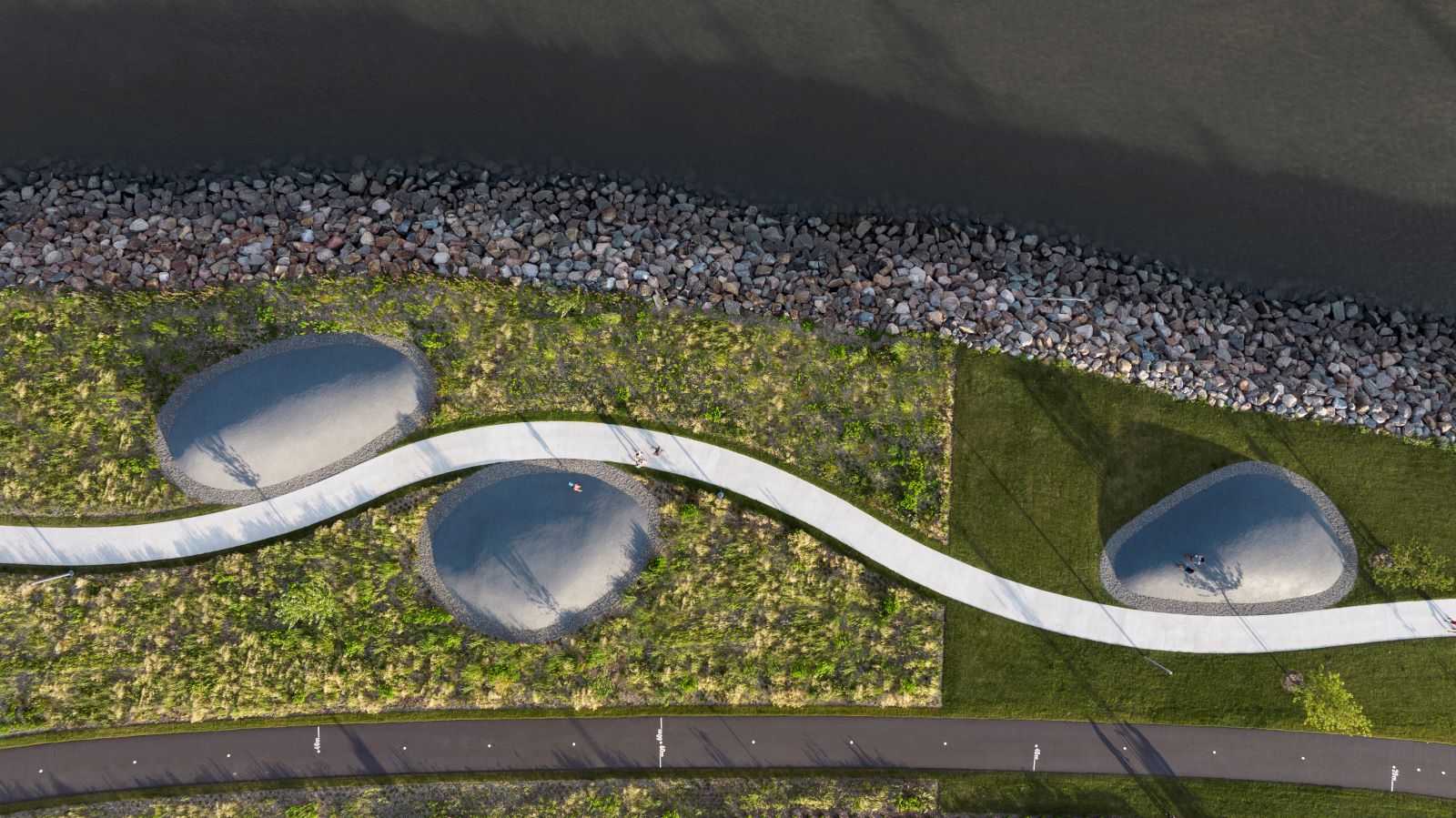
Quebec's Promenade Samuel-de Champlain has opened to the public, with the third and final phase of the project now completed, comprising some 2.5km of a waterside urban boulevard. The finished development is a new community space, ideal for bankside walks, beachside cafés, and recreational activities, carefully intertwining urban design with its surrounding context.
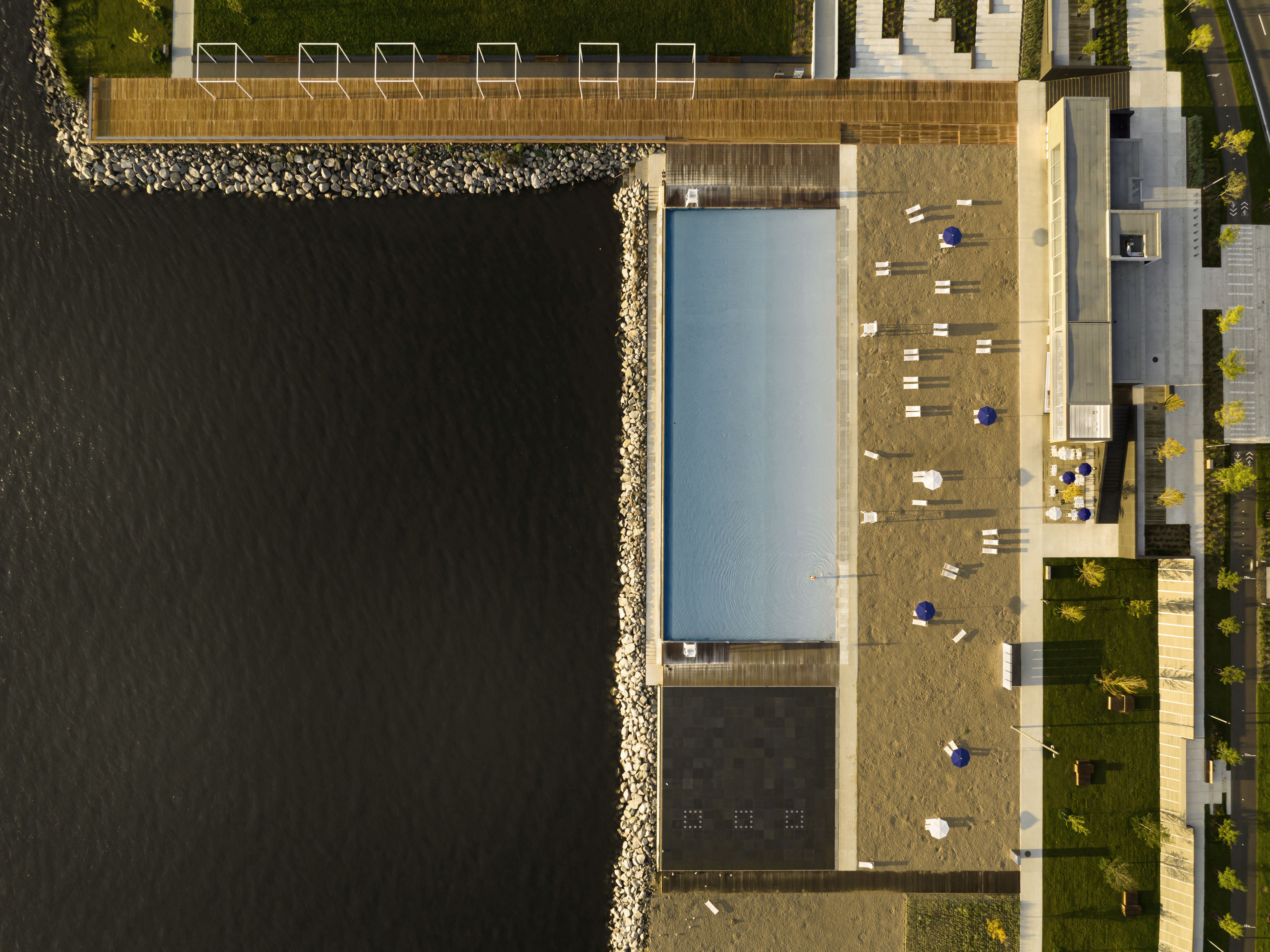
The beach sector, a recreational area within the project
Stroll along Promenade Samuel-de Champlain
Architecture studio Daoust Lestage Lizotte Stecke wrapped up this final phase 15 years after its initial proposal from Commission de la Capitale Nationale du Québec. The area, set in the heart of the Canadian city, along the St Laurence River, previously consisted of neglected highways and rail corridors, which felt unwelcoming and unloved. The goal was to return the river to the local community.
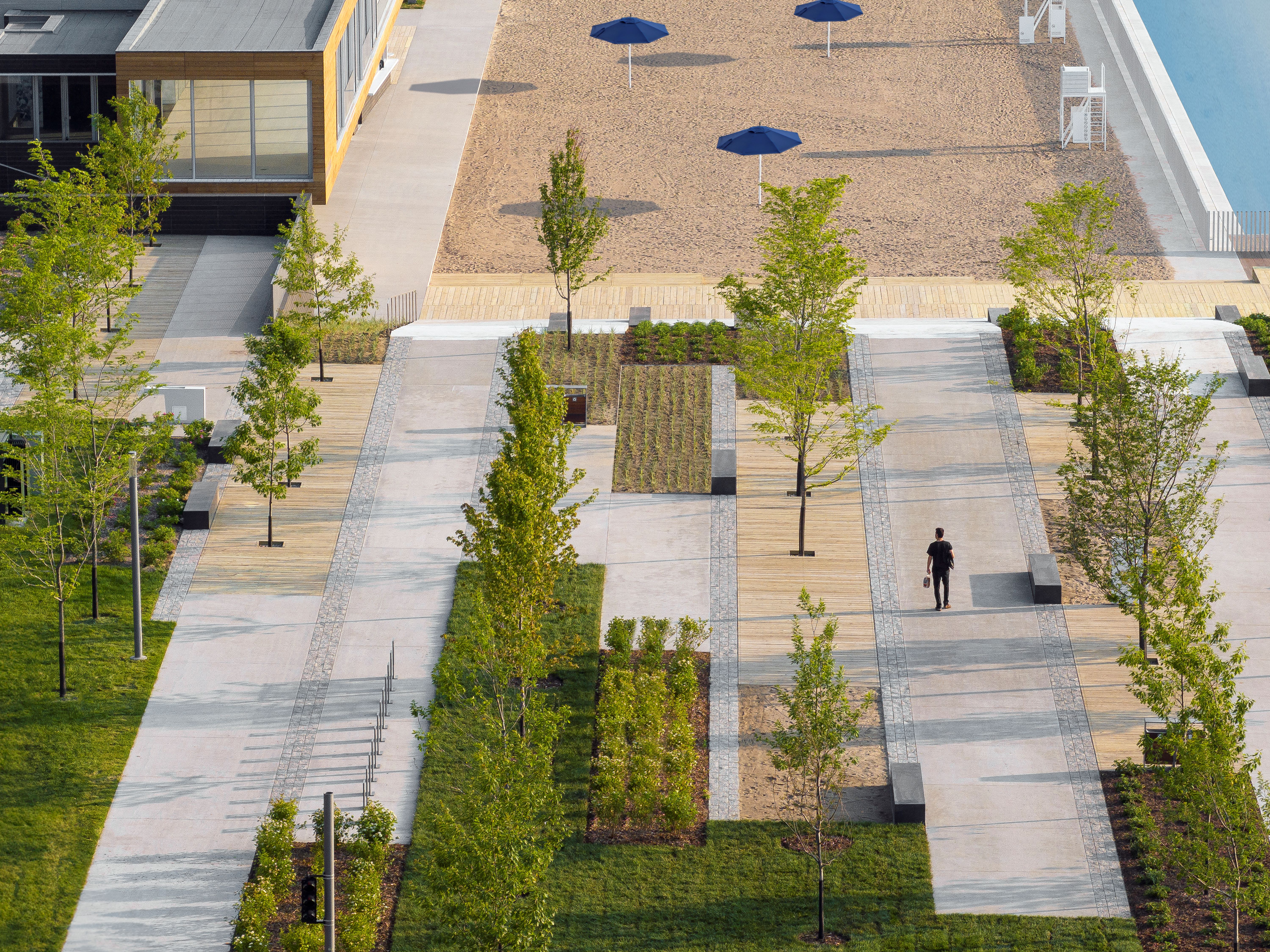
Beach sector
The architecture studio drew inspiration from this important body of water for the region, following the curvature of its meanders through the city. Balancing architecture and landscape design, Promenade Samuel-de Champlain is set to become a significant local cultural landmark.

Beach sector
Firstly, the transformation of the highway section running through the site and the relocation of the local railway tracks unlocked some 150,000 sq m of land, which could be used as a recreational space. Then, drawing from the area’s rich history in the timber trade, the studio drew on the architecture of early 19th-century industrialists, creating a modern, minimalist architecture language with a nod to local heritage. This encompasses the significant use of wood, mimicking dock-like shapes which defined this shoreline in the past.
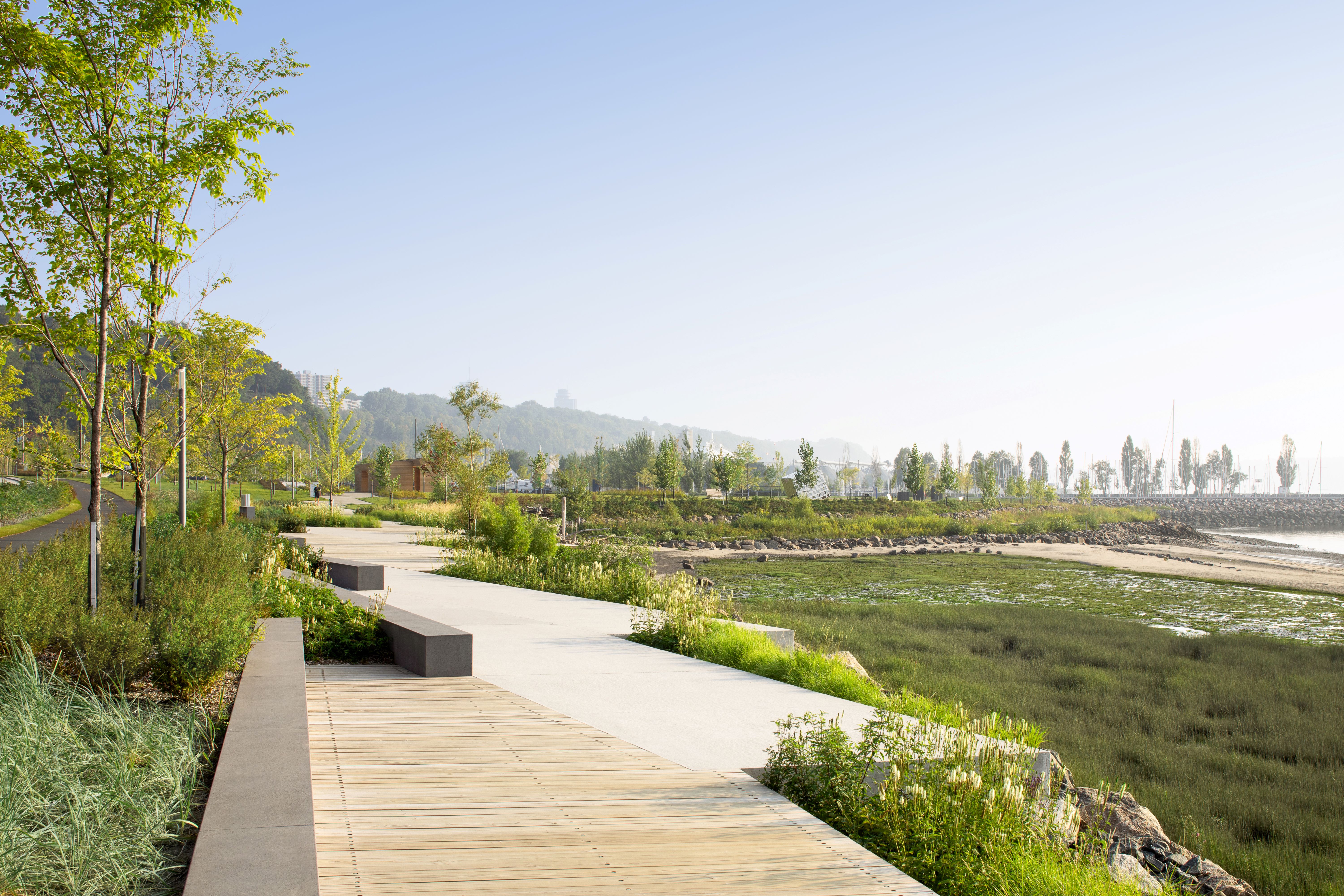
An existing marsh ecosystem has been consolidated
Pavillon des Baigneurs is the site's central service building, featuring two main, rectangular volumes. Constructed of granite and wood, the structure's elongated form offers panoramic views of the river, naturally inviting the outdoors in. The beach is open to all and encourages the community to engage with nature. It is surrounded by a sea lyme grass plant bed and a nearby, publically accessible snack bar.
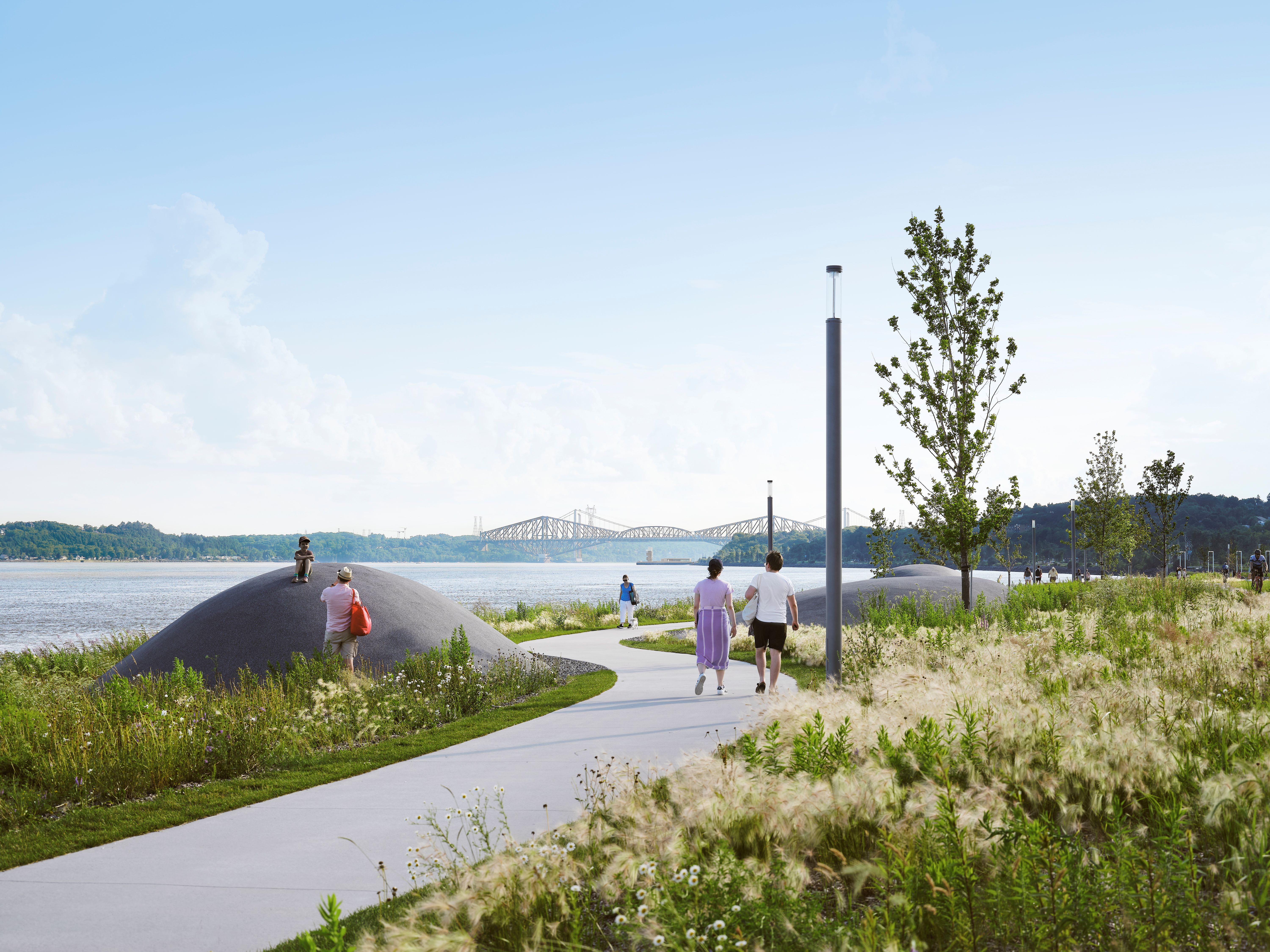
The path includes an area of coastal meadow landscaping
The promenade offers a variety of experiences, with a series of gardens replicating a coastal landscape; a dockside trail carving into a marshland; and the contemporary Pavilion de la Voile building offering sports facilities, picnic platforms, and access to the riverbank.
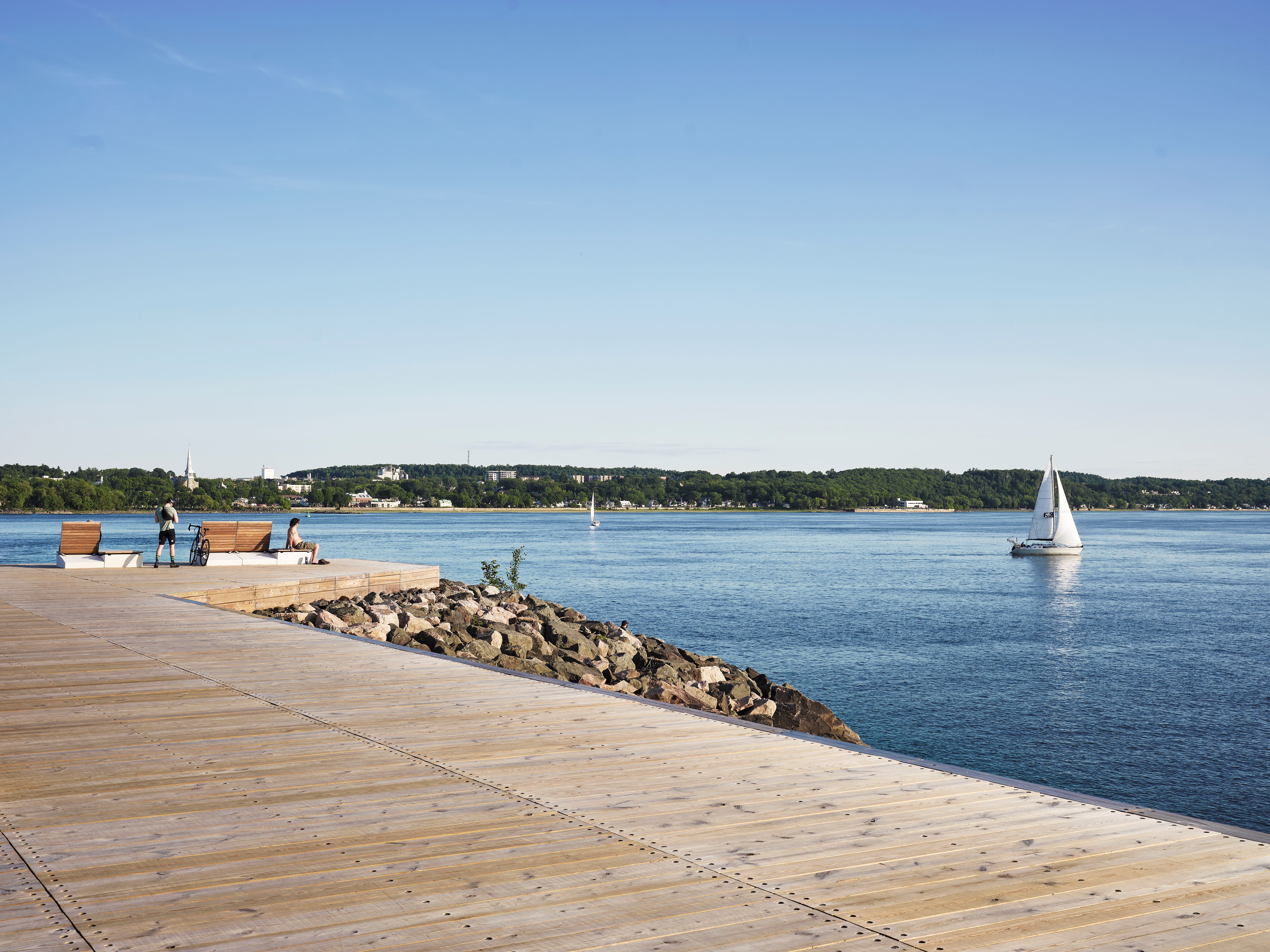
Revitalisation of Quai Frontenac
The architects made sure to weave in sustainable architecture elements within their planning, restoring previously neglected biodiversity. This was key to the scheme –highlighting the project's aim to become a meaningful celebration of public health, nature and climate action.
Receive our daily digest of inspiration, escapism and design stories from around the world direct to your inbox.

Pavillon de la Côte, a sheltered stop
Tianna Williams is Wallpaper’s staff writer. When she isn’t writing extensively across varying content pillars, ranging from design and architecture to travel and art, she also helps put together the daily newsletter. She enjoys speaking to emerging artists, designers and architects, writing about gorgeously designed houses and restaurants, and day-dreaming about her next travel destination.
-
 This cult Los Angeles pop-up restaurant now has a permanent address
This cult Los Angeles pop-up restaurant now has a permanent addressChef Brian Baik’s Corridor 109 makes its permanent debut in Melrose Hill. No surprise, it's now one of the hardest tables in town to book
-
 French bistro restaurant Maset channels the ease of the Mediterranean in London
French bistro restaurant Maset channels the ease of the Mediterranean in LondonThis Marylebone restaurant is shaped by the coastal flavours, materials and rhythms of southern France
-
 How ethical is Google Street View, asks Jon Rafman in Copenhagen
How ethical is Google Street View, asks Jon Rafman in CopenhagenIn 'Report a Concern - the Nine Eyes Archives' at Louisiana Museum of Art, Copenhagen, Jon Rafman considers technology's existential implications
-
 The Architecture Edit: Wallpaper’s houses of the month
The Architecture Edit: Wallpaper’s houses of the monthFrom Malibu beach pads to cosy cabins blanketed in snow, Wallpaper* has featured some incredible homes this month. We profile our favourites below
-
 Explore the riches of Morse House, the Canadian modernist gem on the market
Explore the riches of Morse House, the Canadian modernist gem on the marketMorse House, designed by Thompson, Berwick & Pratt Architects in 1982 on Vancouver's Bowen Island, is on the market – might you be the new custodian of its modernist legacy?
-
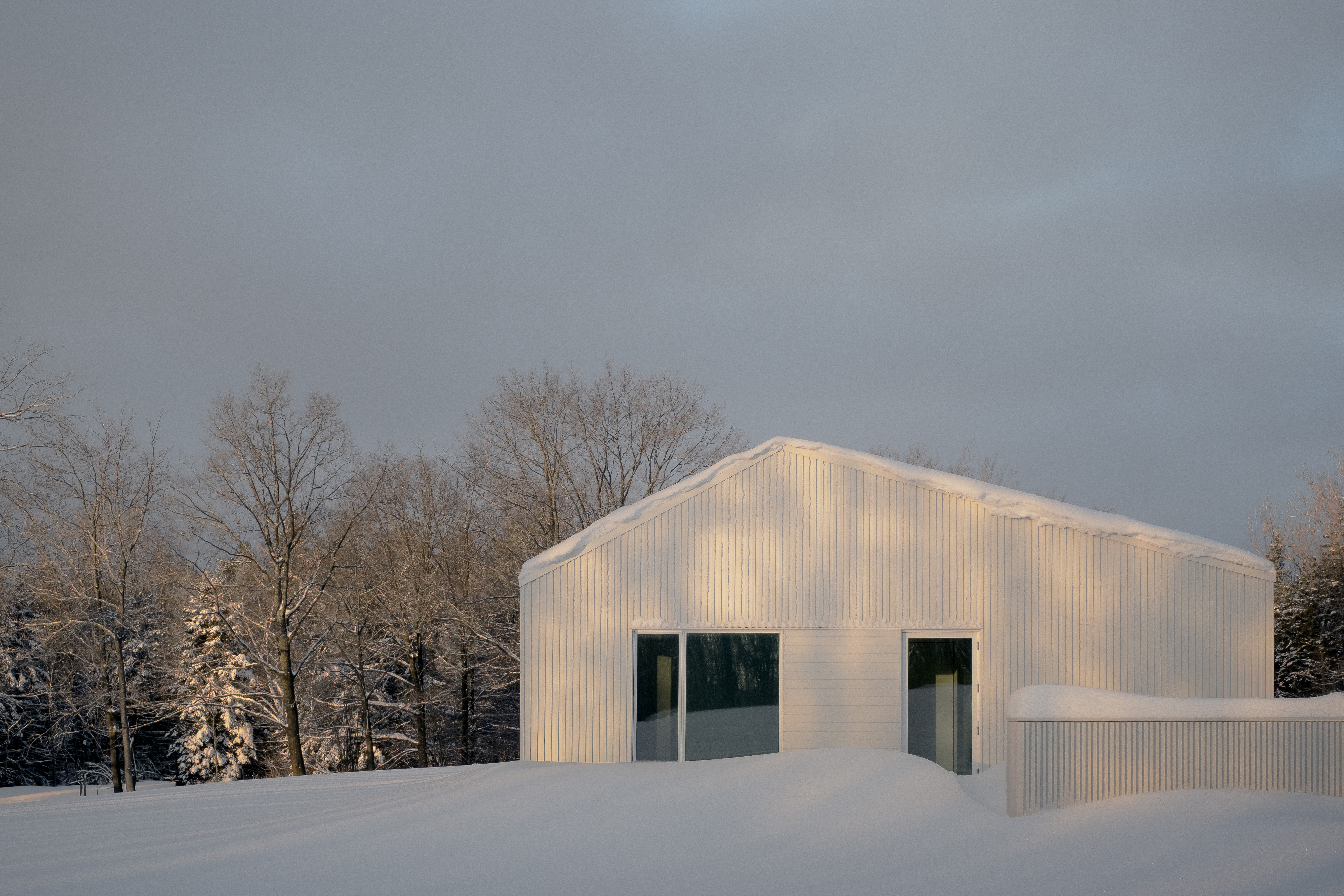 Cosy up in a snowy Canadian cabin inspired by utilitarian farmhouses
Cosy up in a snowy Canadian cabin inspired by utilitarian farmhousesTimbertop is a minimalist shelter overlooking the woodland home of wild deer, porcupines and turkeys
-
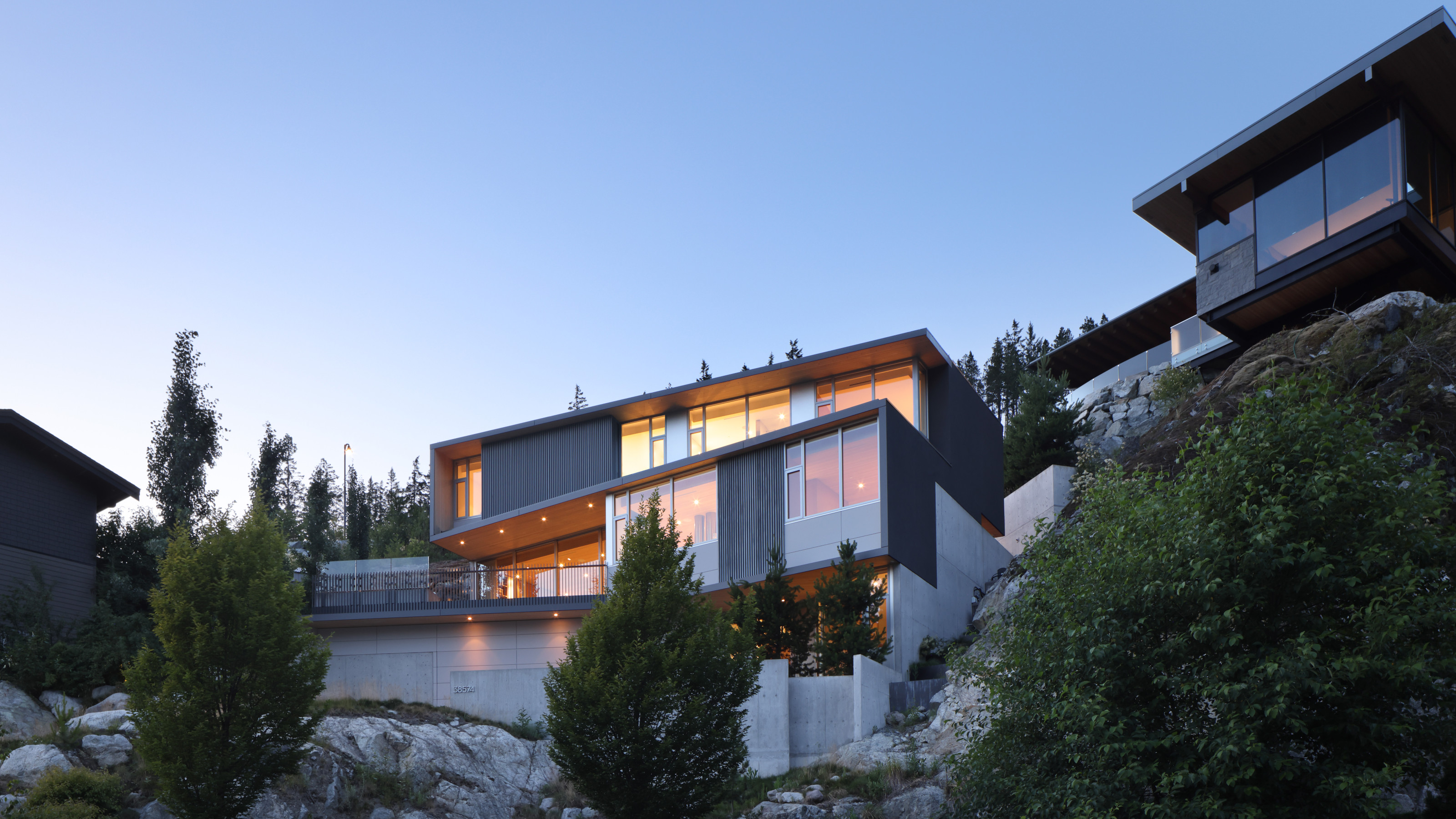 Buy yourself a Sanctuary, a serene house above the British Columbia landscape
Buy yourself a Sanctuary, a serene house above the British Columbia landscapeThe Sanctuary was designed by BattersbyHowat for clients who wanted a contemporary home that was also a retreat into nature. Now it’s on the market via West Coast Modern
-
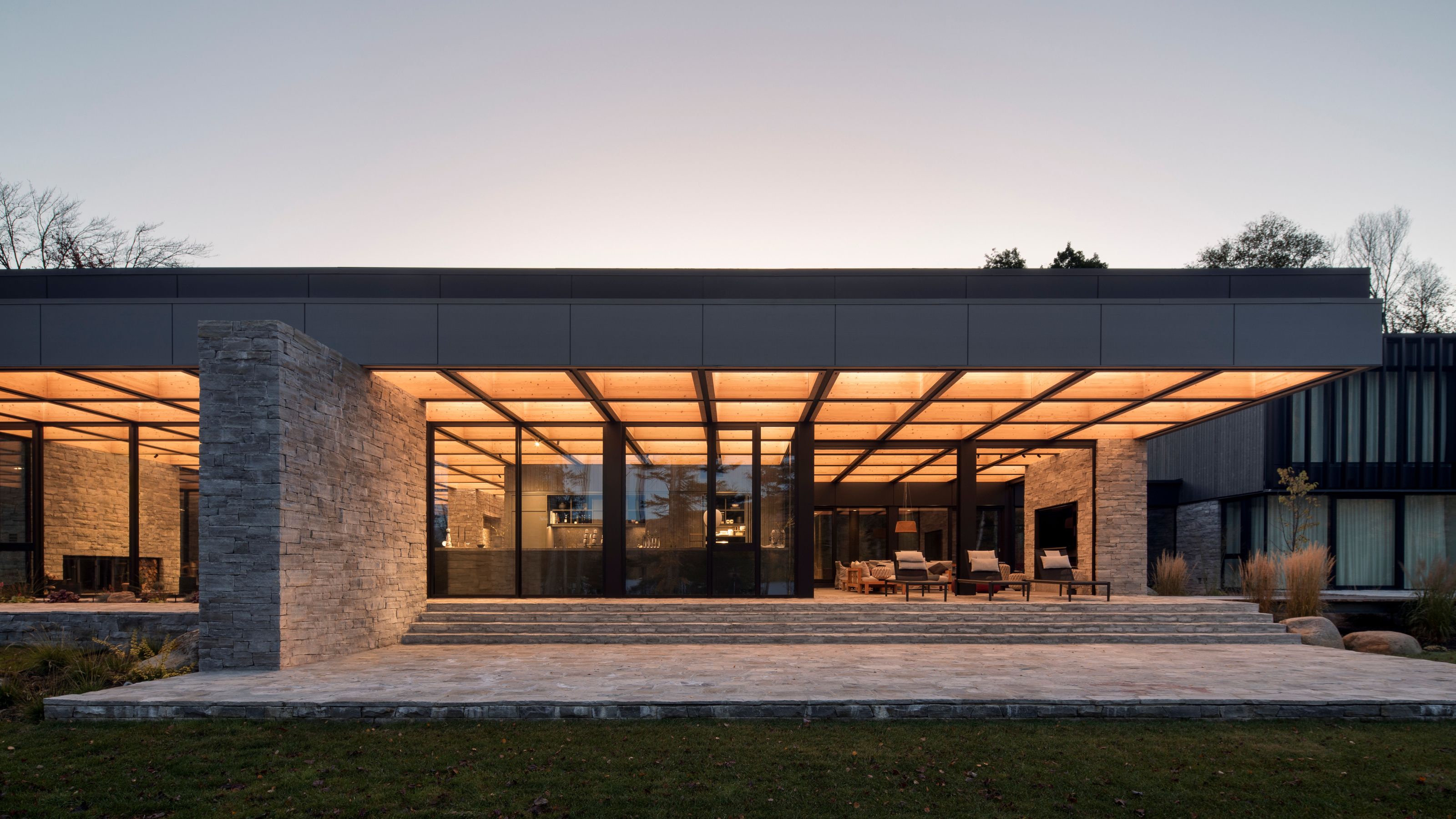 La Maison de la Baie de l’Ours melds modernism into the shores of a Québécois lake
La Maison de la Baie de l’Ours melds modernism into the shores of a Québécois lakeACDF Architecture’s grand family retreat in Quebec offers a series of flowing living spaces and private bedrooms beneath a monumental wooden roof
-
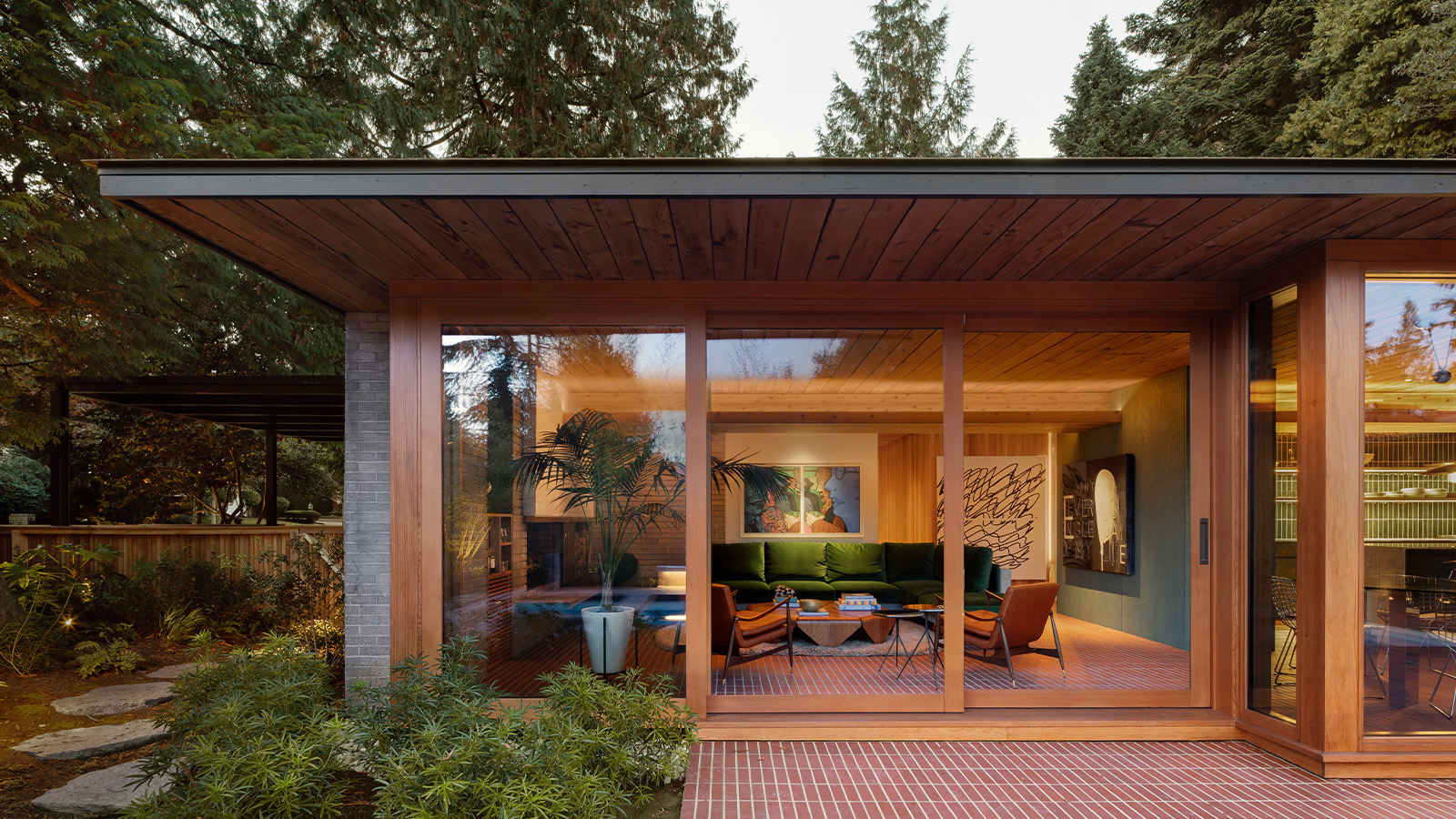 Peel back maple branches to reveal this cosy midcentury Vancouver gem
Peel back maple branches to reveal this cosy midcentury Vancouver gemOsler House, a midcentury Vancouver home, has been refreshed by Scott & Scott Architects, who wanted to pay tribute to the building's 20th-century modernist roots
-
 A spectacular waterside house in Canada results from a radical overhaul
A spectacular waterside house in Canada results from a radical overhaulSplyce Design’s Shoreline House occupies an idyllic site in British Columbia. Refurbished and updated, the structure has been transformed into a waterside retreat
-
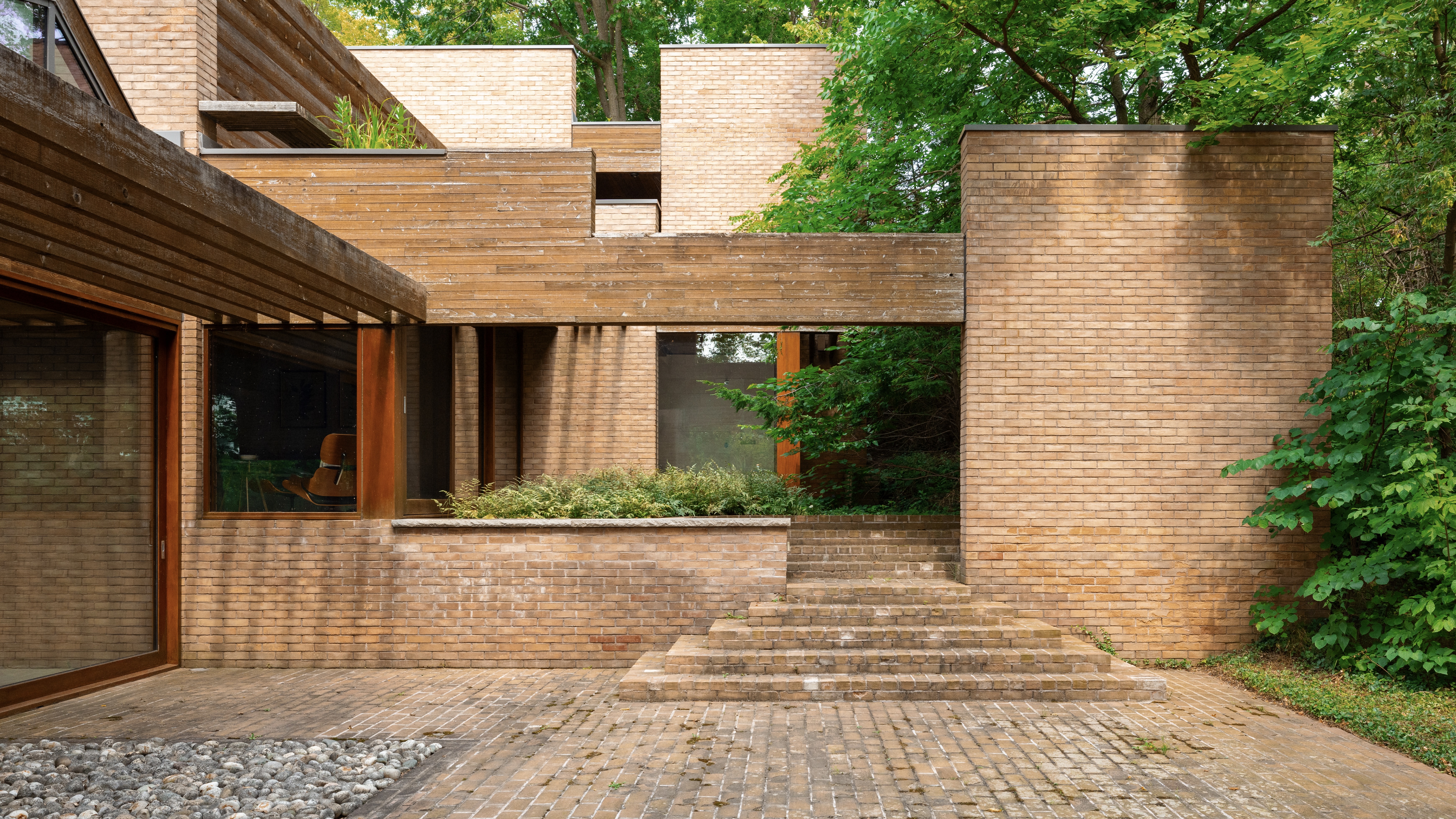 Hilborn House, one of Arthur Erickson’s few residential projects, is now on the market
Hilborn House, one of Arthur Erickson’s few residential projects, is now on the marketThe home, first sketched on an envelope at Montreal Airport, feels like a museum of modernist shapes, natural materials and indoor-outdoor living